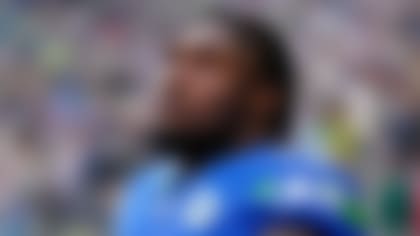Fans hear the words "neck fusion" and wonder why Peyton Manning is even considering playing again, fearful he'll risk a career-ending injury -- or worse -- the next time he takes a hit.
But safety isn't Manning's issue, several spine specialists said. Arm strength is.
Manning's surgically repaired neck will be able to take a hit just fine once the fusion is healed, with the bone actually stronger than others in his neck. Nerves are delicate, however, and only time will tell if they'll recover enough for the 35-year-old four-time NFL MVP to be the quarterback he once was.
"His risk really is very low," said Dr. Robert S. Bray Jr., who has worked with NHL star Sidney Crosby and whose DISC Sports & Spine Center provides medical services for the U.S. Olympic team.
"If I was a team, I'd ask, 'Did (the fusion) heal? Do you have a CAT scan that showed it healed? Is the rest of the neck in pretty good shape?' " Bray said. "If those two answers are yes, then it gets down to, 'OK, get out on the field and show me you can perform,' because it will only get better from here with time."
Manning missed the entire 2011 season with a damaged nerve that caused weakness in his right arm and required multiple neck surgeries, including a single-level fusion in September. He has brushed off questions about retirement, insisting that -- after parting ways with the Indianapolis Colts on Wednesday -- he still wants to play.
And there's no risk in him doing so, say several doctors in the field who have not examined Manning. Dr. Robert Watkins, Manning's surgeon, is not commenting on the quarterback, his office said Thursday.
Manning had at least two procedures between February 2010 and September 2011 to relieve pressure on a pinched nerve, the cause of the weakness in his throwing arm. When those didn't work, Watkins did the fusion, removing the troublesome soft disk tissue between two vertebrae and fusing the bones together.
La Canfora: Ultimate QB carousel
We've never seen a QB carousel like this before and we may never see one again. Jason La Canfora explains. **More ...**
The fusion normally takes four to six months to heal and, much like any other broken bone, it becomes even stronger afterward. But just as someone who tries playing with a still-broken arm risks additional injury, so did Manning if he'd returned before the fusion was solid.
But Manning was "working with the best," Bray said, and there's no way Watkins would have allowed the quarterback to play without being certain the fusion had healed. Watkins announced Feb. 2 that he had cleared Manning to play football again.
"In the field of spine surgery and professional athletes, we have a fairly strong consensus that if you have a one-level cervical fusion, you can recover and go back and safely play," said Dr. William Tobler, a neurosurgeon at the Mayfield Clinic in Cincinnati who has done four fusions on NFL players, including four-time Pro Bowl linebacker Chris Spielman, all of whom returned to the field.
"If the fusion heals, the neck is stable so, presumably, you can take all the hitting and impact."
Then it's a matter of the nerve regenerating.
"Nerves are just wires and the muscle is where the wire plugs into," said Dr. Charles Bush-Joseph of Midwest Orthopaedics at Rush University, team doctors for the Chicago Bulls and Chicago White Sox. "Obviously he's got all the intelligence and the skill-set. It's a matter of strength. Can he get his arm to do what his mind and eyes want him to do?"
Reuter: Peyton's draft impact
How will the Peyton Manning sweepstakes impact April's NFL draft? Chad Reuter provides a handful of potential scenarios. **More ...**
And that takes time.
Unlike a sponge, which springs right back after someone stops pressing down on it, a nerve is more like a piece of cooked spaghetti, Tobler said. Press on it, and the indentation remains after the finger is lifted.
"It isn't like a light switch," Bray said. "But if you get the pressure off, then the nerve kicks in progressively over time."
While there's no guarantee Manning will ever fully recover, Bray said nerves tend to heal more and for a longer period of time when patients are young and healthy.
Manning said Wednesday he is not completely recovered, but insisted he's closer than ever.
"I'm throwing it pretty well. I still have some progress to make, but I've come a long way," Manning said. "That's been the most fun part is being back out there on the field. I'm doing better, I continue to work hard and hope to continue making progress."
Copyright 2012 by The Associated Press



